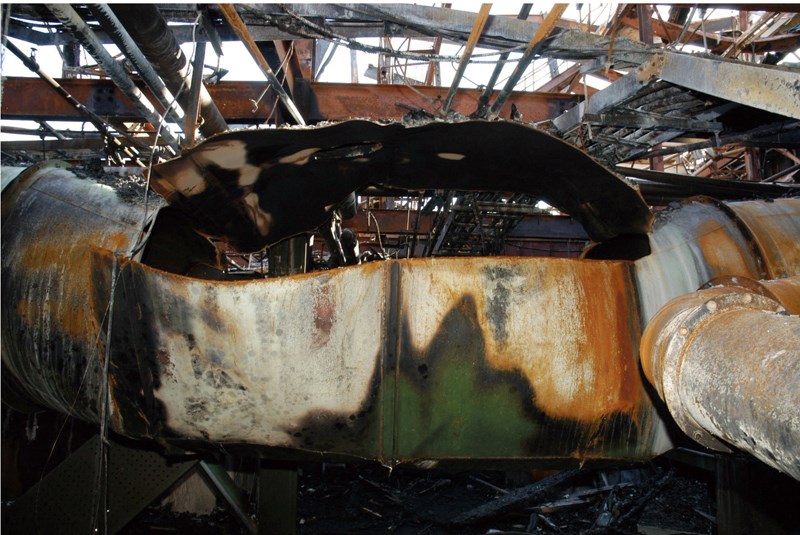A Prince George fire prevention officer found excessive amounts of pine wood dust in Lakeland sawmill's slasher area during an inspection five months prior to the April 2012 explosion that killed two men and injured 21 other employees, a coroner's inquest into the disaster heard Monday.
What Steven Feeney found during the November 2011 inspection raised enough concern for him to take photos, which have been presented as evidence during the inquest. Feeney followed up with a letter and, in March 2012, he found the level of dust was back down to an acceptable level although he continued to list the problem as a deficiency in his report.
Feeney said he always phoned ahead to book an appointment to conduct an inspection and was accompanied by a mill supervisor.
Feeney recognized wood dust as a fire hazard but it was not until after the Jan. 20, 2012 explosion at Babine Forest Products near Burns Lake, that he began to also see would dust as posing a potential for an explosion. Feeney said he heard rumours that the Babine explosion, which also killed two and injured more than 20 others, was related to wood dust.
Feeney took the inquest through a series of inspection reports and followup letters written to Lakeland beginning with his first inspection of the site in September 2010.
A consistent theme was that Lakeland required a fire safety plan, complete with an evacuation plan that was to be posted around the facility. Despite ongoing requests, Feeney said a plan was never given to him, indicating one had never been completed.
Asked by John Rogers, the counsel for the United Steelworkers, if he had the authority to shut down a site if there was a fire hazard, Feeney said the step required obtaining an order through the fire commissioner.



